Rome is often associated with famous and majestic landmarks however, this ancient metropolis also harbors a collection of lesser-known treasures that offer a more intimate glimpse into its rich history and culture. For those looking to explore beyond the main attractions, there are hidden gems that offer a unique glimpse into the Eternal City’s past. These lesser-known landmarks provide a blend of architectural beauty, fascinating history, and a chance to escape the crowded tourist spots.
Travelers can uncover these off-the-beaten-path locations, which showcase the engineering excellence and artistic heritage of ancient Rome. Each landmark tells its own story, inviting visitors to step back in time and experience a different side of this remarkable city. These sites offer an enriching adventure that goes beyond the usual tourist experience.

Exploring these hidden treasures allows for both solitude and inspiration, creating memorable experiences away from the bustling crowds. With so much to see in Rome, discovering these lesser-known landmarks can be just as rewarding as visiting the city’s famous icons.
Key Takeaways
- Discover unique historical sites that offer an alternative view of Rome.
- Experience rich architectural detail and serene settings away from tourists.
- Engage with Rome’s lesser-known narratives and artistic delights.
Ostia Antica: The Harbor City of Ancient Rome
Ostia Antica provides a unique glimpse into the workings of Rome’s ancient economy. Once the bustling port city, it allowed goods to flow into the capital. Its well-preserved ruins, such as the impressive theater and the marketplace, showcase everyday life and trade dynamics. Visitors can explore mosaiced floors that depict various trades, offering insights into the daily lives of ordinary Romans.
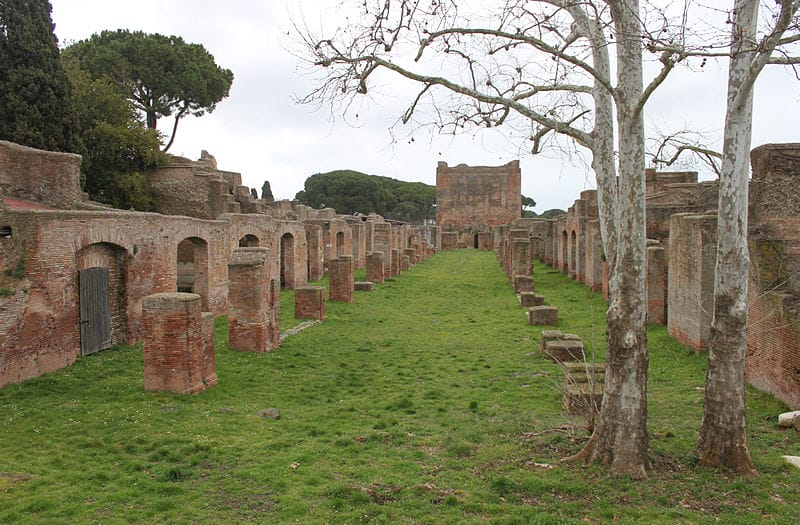
Domus Aurea: Nero’s Forgotten Palace
The Domus Aurea, or “Golden House,” built by Emperor Nero after the Great Fire of 64 AD, presents an extraordinary example of ancient Roman architecture. It features an elaborate design, with a vast complex that includes gardens, porticos, and pools. Despite its ruins today, visitors can still appreciate the scale and ambition of Nero’s vision.

The inner rooms are adorned with intricate frescoes that illustrate mythological themes and natural scenery, showcasing the artistry of Roman fresco painters. These artworks reflect a blend of vibrant colors and intricate details, demonstrating the sophistication of Roman decorative arts. Touring the Domus Aurea provides a glimpse into the rich lifestyle of Rome’s elite and highlights the architectural innovations of the period.
Capuchin Crypt’s Artistic Mortality
The Capuchin Crypt is a unique blend of architecture and art designed for the contemplation of mortality. Located beneath the Church of Santa Maria della Concezione dei Cappuccini, this crypt features skeletal remains artistically arranged with Baroque elements.
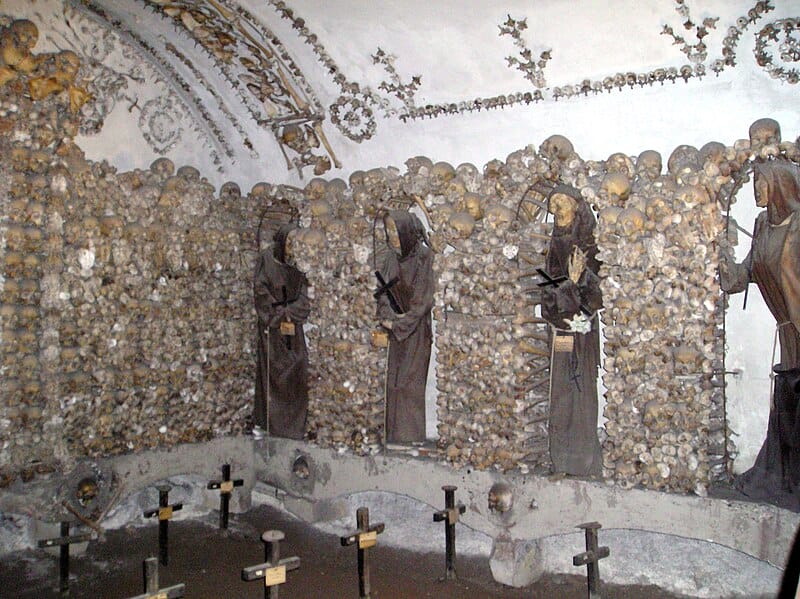
Source: No machine-readable author provided. Tessier~commonswiki assumed (based on copyright claims)., CC BY-SA 3.0 https://creativecommons.org/licenses/by-sa/3.0/, via Wikimedia Commons
The walls are adorned with frescoes and artistic compositions that integrate bones, creating striking visual contrasts. These artworks provoke thoughts on life and death, employing morbid explorations of spirituality through art.
Aqueducts of the Parco degli Acquedotti
The aqueducts in Parco degli Acquedotti represent a remarkable engineering achievement that supplied water to ancient Rome. Constructed in the 3rd century BCE, these structures are part of a larger system that spanned over 500 kilometers. Visitors can view impressive arches that stretch across the park, showcasing the ingenuity of Roman architects. The aqueducts utilized gravity for water flow, demonstrating an advanced understanding of hydrodynamics.
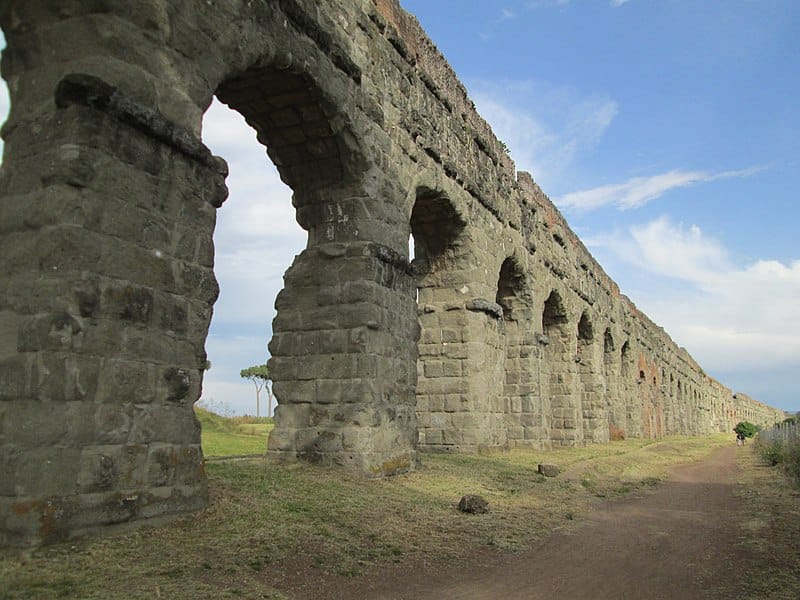
Source: Larry from Charlottetown, PEI, Canada, CC BY 2.0 https://creativecommons.org/licenses/by/2.0, via Wikimedia CommonsAqueducts of the Parco degli Acquedotti
Source:
This park not only highlights the utility of the aqueducts but also serves as a recreational area today, allowing visitors to appreciate scenic views alongside historical monuments. The juxtaposition of nature and ancient engineering creates a unique atmosphere for exploring Rome’s past.
Baths of Caracalla
The Baths of Caracalla, completed in 216 CE, represent the grandeur of Roman public baths and their engineering prowess. This complex, spanning approximately 25 acres, could accommodate thousands of visitors daily, showcasing the importance of bathing in Roman culture.
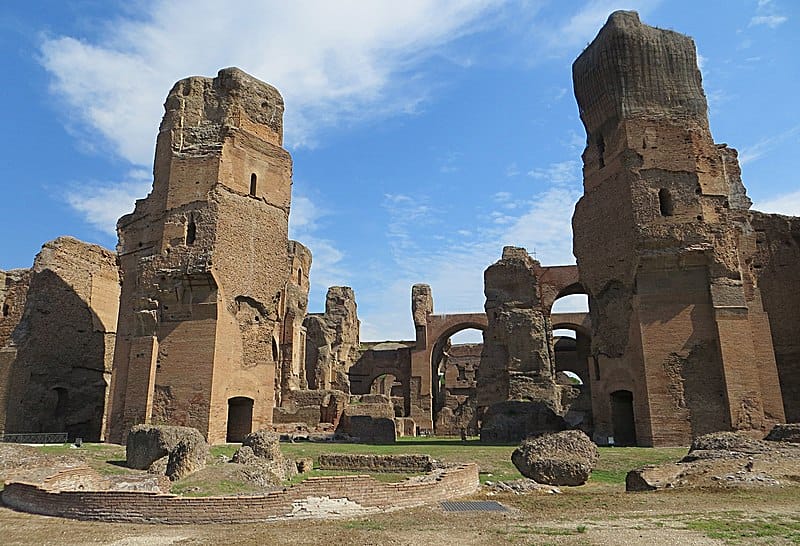
Source: Mister No, CC BY 3.0 https://creativecommons.org/licenses/by/3.0, via Wikimedia Commons
Advanced construction techniques allowed for vast, open spaces, supported by massive brick walls and intricate vaults. The baths included facilities such as hot and cold rooms, swimming pools, and exercise areas, with elaborate mosaics and sculptures decorating the interiors.
Hygiene and relaxation were vital aspects of Roman life, and the Baths of Caracalla stand as a testament to their engineering capabilities and understanding of public spaces. Today, this landmark invites exploration, allowing visitors to connect with the relaxation practices of ancient Romans.
Quartiere Coppedè: Rome’s Art Nouveau Gem
Designed by architect Gino Coppedè in the early 20th century, Quartiere Coppedè stands as a remarkable example of Art Nouveau architecture in Rome. This neighborhood features whimsical buildings adorned with intricate mosaics, fantastical sculptures, and ornamental ironwork.
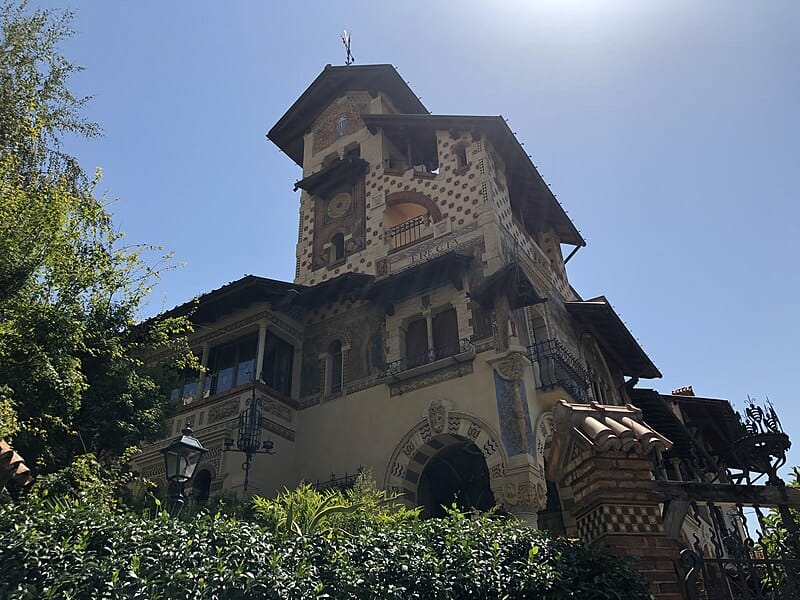
Visitors can wander through picturesque piazzas, where vibrant facades display striking architectural elements, such as floral motifs and mythological themes. The enchanting atmosphere of Quartiere Coppedè makes it a favorite for photographers and art enthusiasts alike. This area provides an opportunity to admire the harmony of artistic design while enjoying the peaceful ambiance, making it a perfect stop for those seeking something different in Rome.
The Serenity of Aventine Hill’s Keyhole
Aventine Hill is renowned for its peaceful atmosphere, offering an escape from the city’s hustle and bustle. One of its iconic features is the Aventine Keyhole, found at the Priory of the Knights of Malta. Looking through this small keyhole grants a glimpse of St. Peter’s Basilica framed by lush greenery, creating a picturesque view that captivates many visitors. This unique perspective emphasizes the allure of hidden gems in Rome.
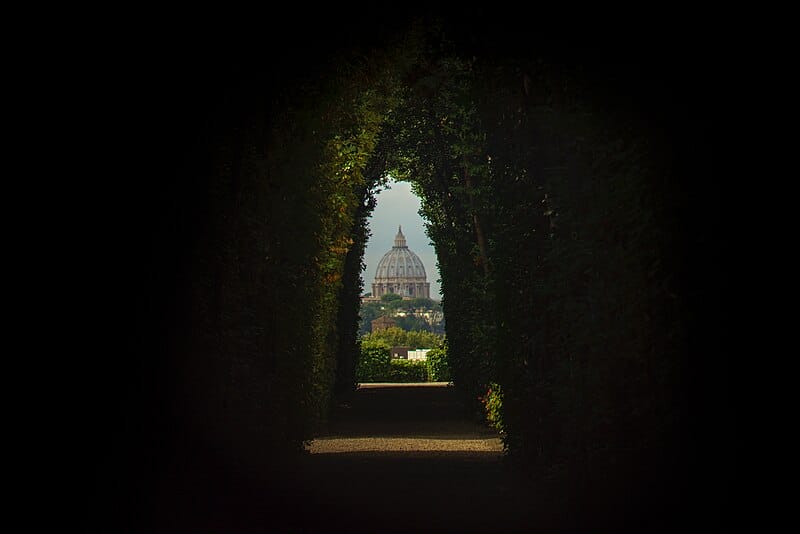
Beyond the keyhole, the hill is dotted with calm gardens and historic sites, including the orange garden (Giardino degli Aranci), where stunning views of the city can be enjoyed. Aventine Hill provides a peaceful haven for reflection and enjoyment of art, history, and nature in Rome.
Largo di Torre Argentina: Echoes of Julius Caesar
Largo di Torre Argentina is a fascinating archaeological landmark. It features the remains of four Roman Republican temples and the Curia of Pompey, where Julius Caesar met his fate. The site is not just a historical landmark; it is also home to the Torre Argentina Cat Sanctuary.
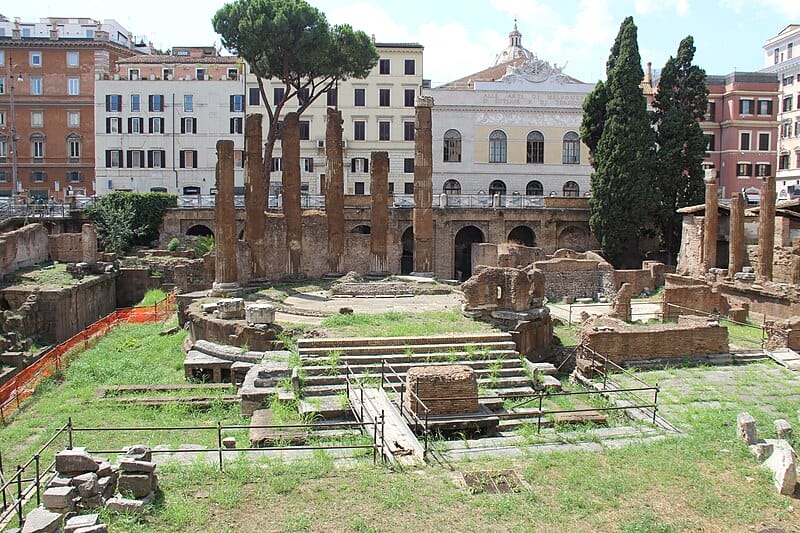
People Also Ask:
What are some underrated historical landmarks to visit in Rome?
Rome is filled with less popular yet significant landmarks such as the Baths of Caracalla, which showcase ancient Roman engineering. The Basilica di San Clemente also offers a glimpse into layers of history through its multiple architectural phases.
Can you recommend any off-the-beaten-path archaeological sites in Rome?
The Area Sacra di Largo Argentina is an archaeological site featuring ancient temples and the remains of Julius Caesar’s assassination location. The remains of the Temple of Hercules and the Temple of Portunus are also noteworthy landmarks and stops for enthusiasts.
What are the must-see ancient landmarks in Rome that are typically less crowded?
The Palazzo Doria Pamphilj houses a valuable art collection and is often less frequented by tourists. The Museo Nazionale Romano features stunning exhibits and is a tranquil alternative to the busy Vatican Museums.
Where can one find lesser-known Roman artifacts on display?
The Museo Nazionale Romano includes multiple locations displaying a range of lesser-known artifacts. Items at the Crypta Balbi offer insights into urban life during ancient Roman times.
Besides the mainstream attractions and landmarks, what unique historical sites does Rome offer?
Visitors can explore the Museo di Roma in Trastevere, which highlights the history and culture of the area. The Appian Way, one of the oldest roads in Rome, provides an experience rich in historical context away from the usual tourist spots.
The Temple of the Vestals in the Forum Romanum provides a lesser-known glimpse into ancient Roman religious practices. The ruins of the Temple of Apollo on Palatine Hill are also intriguing sites for those interested in pagan history and landmarks.
Hello, my name is Vladimir, and I am a part of the Roman-empire writing team.
I am a historian, and history is an integral part of my life.
To be honest, while I was in school, I didn’t like history so how did I end up studying it? Well, for that, I have to thank history-based strategy PC games. Thank you so much, Europa Universalis IV, and thank you, Medieval Total War.
Since games made me fall in love with history, I completed bachelor studies at Filozofski Fakultet Niš, a part of the University of Niš. My bachelor’s thesis was about Julis Caesar. Soon, I completed my master’s studies at the same university.
For years now, I have been working as a teacher in a local elementary school, but my passion for writing isn’t fulfilled, so I decided to pursue that ambition online. There were a few gigs, but most of them were not history-related.
Then I stumbled upon roman-empire.com, and now I am a part of something bigger. No, I am not a part of the ancient Roman Empire but of a creative writing team where I have the freedom to write about whatever I want. Yes, even about Star Wars. Stay tuned for that.
Anyway, I am better at writing about Rome than writing about me. But if you would like to contact me for any reason, you can do it at contact@roman-empire.net. Except for negative reviews, of course. 😀
Kind regards,
Vladimir
